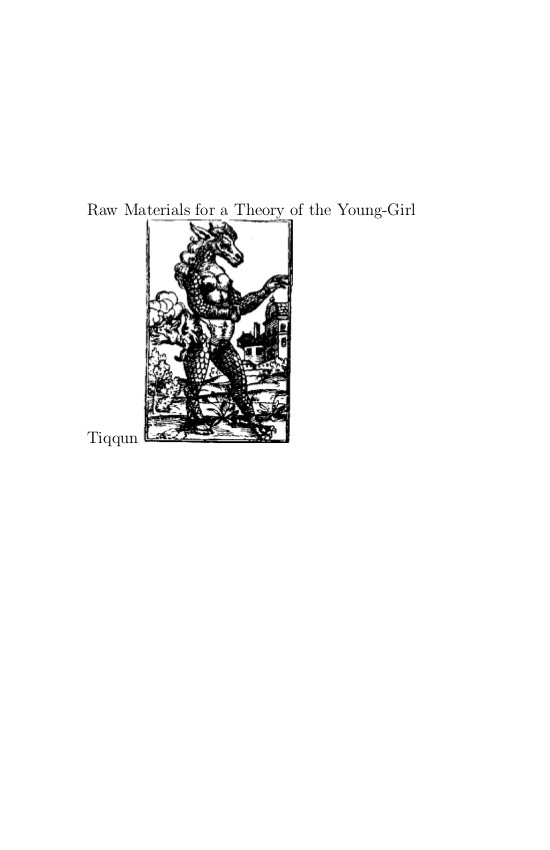Reginald Smith Brindle: The New Music: The Avant-garde since 1945, 2nd ed (1975/1987)
Filed under book | Tags: · avant-garde, composition, electronic music, experimental music, music, music history, musique concrète

This guide to the more adventurous evolutions of music since 1945–pointillism, post-Webernism, integral serialism, free dodecaphony, aleatory and indeterminate music, graphics, musique concrète, electronic music, and theatre music–was first published in 1975 and has been reprinted several times. For this second edition, Smith Brindle has added a new chapter reviewing developments over the decade since first publication. He discusses the decline of experimentalism and the reaction against increasing cerebralism and complexity as variously illustrated by the more recent works of Stockhausen, the minimalist works of Reich and Glass, and the partial return to romanticism. He also reviews the technological revolution which has taken place in computer music and concludes that the future of music will for the time being be most closely associated with technological change and development, rather than with radical changes in compositional techniques.
First edition published 1975
Publisher Oxford University Press, 1987
ISBN 0193154714, 9780193154711
222 pages
PDF (DJVU)
Comment (0)D Caboret, P Garrone: Avant-garde and Mission: Tiqqunery (1999) [French/English]
Filed under pamphlet | Tags: · capitalism, kabbalah, nihilism, philosophy, politics, theory

A critical study guide for readers of Tiqqun magazine.
“Addressed in 1999 to a small group of persons, the following text was intended to describe in general the philosophical and religious affiliations that the members of the magazine Tiqqun associated themselves with either explicitly or implicitly.” (from the introduction)
Publisher Friends of LHOOQ, Paris
Second edition, 2002
PDF [French]
PDF [English]
View online (HTML) [English]
Tiqqun: Raw Materials for a Theory of the Young-Girl (1999–) [EN, DE]
Filed under book | Tags: · biopolitics, biopower, body, capitalism, consumerism, desire, feminism, labour, love, metaphysics, philosophy, reification, seduction, sexuality, theory

“First published in France in 1999, Preliminary Materials for a Theory of the Young-Girl dissects the impossibility of love under Empire. The Young-Girl is consumer society’s total product and model citizen: whatever “type” of Young-Girl she may embody, whether by whim or concerted performance, she can only seduce by consuming. Filled with the language of French women’s magazines, rooted in Proust’s figure of Albertine and the amusing misery of (teenage) romance in Witold Gombrowicz’s Ferdydurke, and informed by Pierre Klossowski’s notion of “living currency” and libidinal economy, Preliminary Materials for a Theory of the Young-Girl diagnoses — and makes visible — a phenomenon that is so ubiquitous as to have become transparent.
In the years since the book’s first publication in French, the worlds of fashion, shopping, seduction plans, makeover projects, and eating disorders have moved beyond the comparatively tame domain of paper magazines into the perpetual accessibility of Internet culture. Here the Young-Girl can seek her own reflection in corporate universals and social media exchanges of “personalities” within the impersonal realm of the marketplace. Tracing consumer society’s colonization of youth and sexuality through the Young-Girl’s “freedom” (in magazine terms) to do whatever she wants with her body, Tiqqun exposes the rapaciously competitive and psychically ruinous landscape of modern love.” (from Semiotexte, the publisher of the 2012 edition)
Announcement and discussion about the translation
Commentary (Rob Horning, 2012)
More commentaries (compiled by 1000 Little Hammers, 2013)
Originally published in French as Premiers matériaux pour une Théorie de la Jeune-Fille in Tiqqun 1, 1999
Revised, republished by Éditions Mille et une nuits, 2001.
Translator unknown
Published on younggirl.jottit.com, Jan 2010
PDF (2010)
HTML (2010)
HTML (2012 edition, trans. Ariana Reines, Preliminaries + Chapters 6 & 7)
German edition (2009)

